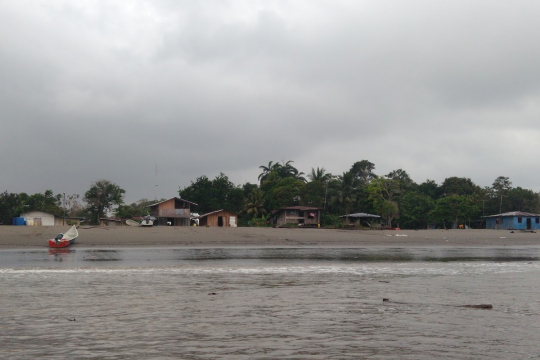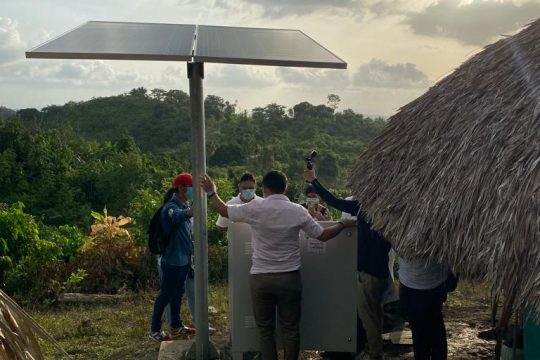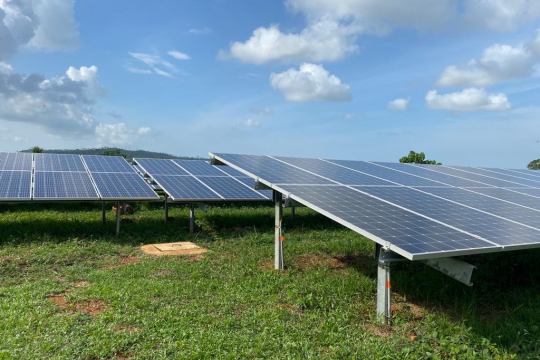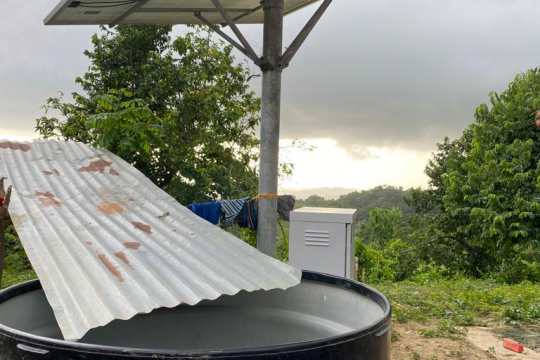The analysis of electricity markets is difficult because of multiple possible solutions and different local conditions. Simulators facilitate this task for policymakers and researchers. An exciting project in Colombia has resulted in “microworld” simulators that provide valuable insights.
In the Colombian electricity sector, private firms can invest in electricity generation capacity. The Colombian government has implemented policies and laws to promote investment in generation capacity. One law from 2014 promotes renewable energy resources using “indirect incentives”, such as tax reductions, tax exemptions, and tariff reductions for companies that invest in renewable energy capacity.
Presents simulations
Santiago Arango Aramburo, EfD Colombia, has found that there are more efficient ways than those proposed in the law from 2014 to promote the investment in renewable capacity for electricity generation. In a research article, Santiago and his colleagues present simulations to test scenarios with different combinations of policies that could promote these investments. Results show that combined measures using feed-in-tariffs and technical subsidies can boost the deployment of renewable energy, avoiding significant price increases for the final consumer.
Feed-in-tariffs are long-term agreements between the producer and consumers, in which producers receive a price above the market price of electricity, and subsidies to improve the quality of the electricity supply. Although these policies promote investment in renewable energy capacity more than indirect incentives, none of these incentives reach one of the government’s target of 20% of renewable energy in the Colombian energy matrix, given the growing demand for energy in this developing country.
Extremely dynamic market
This raises the question of how to evaluate the different combinations of incentives to invest in renewable energy sources, considering that the world of energy deployment is extremely dynamic. The learning rates, costs, resource availability, new emerging agents, and other elements vary largely from year to year.
This question made Santiago and his colleagues see the need to build a simulator that could work as a free online tool to test policies and see the results on indicators such as technology deployment, avoided emission, and costs, among others.
Financed by the Ministry of Science
The project Energetica 2030, financed by the Ministry of Science of Colombia and involving more than 12 universities and 4 companies, allowed these researchers to build a simulator that they call “Microworld”. It includes English and Spanish versions and serves as an individual or class learning tool. In Microworld the player acts as the regulator of the electricity market and gets to know the effects of his/her decisions on incentives to renewable energy on electricity markets without waiting weeks or months for the results.
Gives an overview of consequences
It includes four sources of renewable energy: wind, biomass, solar photovoltaic, and small hydroelectricity. This tool will also give policymakers an overview of the possible consequences of the mix of incentives that they plan to implement to increase renewable energy in a country. Likewise, Microworld provides immediate feedback during the user’s learning process about the complex dynamics of a difficult task.
Simulators are very versatile tools, that make it possible to create microworlds that represent many complexities of electric systems, for example, the economic and technical conditions of zones that are not connected to the main country’s electricity grid.
Zones with no or unreliable electricity
Like many other developing countries, Colombia has zones that are either not connected to the national electricity network, or their electricity service is not reliable. In the case of Colombia, most of these zones are in rural areas inhabited by people with very low income. This problem affects almost two million people in Colombia and it is present in 52% of its geographical area.
To gain a better understanding of this problem, Santiago Arango Aramburo and his colleagues analyzed whether the business model pay-as-you-go incentivizes the investment in renewable energy in these Colombian zones in this research article, and developed another microworld called EN-ACCESS.
Great pedagogical tool
The microworld EN-ACCESS allows the person (player) to learn in real-time the effects of hypothetical decisions on the electrification in off-grid zones. The electrification of these zones implies diverse challenges, some of which are: adopting hybrid systems that combine renewable energy, storage, and diesel back-up; having adequate incentives to invest in generation capacity; operating efficiently the existing system; carrying the new systems to zones far from the city.
In this microworld, the player will find a user guide (in Spanish) for autonomous or classwork and exercises to solve the challenges of electrification in off-grid zones. With the use of the microworld, subjects can learn about counterintuitive behavior for rural electrification, where there should be a balanced investment in capacity expansion and maintenance.
“Other countries could also benefit from these simulators from the projects Energetica 2030 and EN-ACCESS. We could use the same methodological approach but considering the local conditions and particularities,” says Santiago Arango Aramburo,
Note: the data mentioned in this article was taken from this research article.
By: Manuela Fonseca-Gómez
Special thanks to Santago Arango-Aramburo and Petra Hansson.
All the pictures are courtesy of the the Research Group Environmental Energy and Education Policy. Universidad Nacional de Colombia, sede Manizales.



